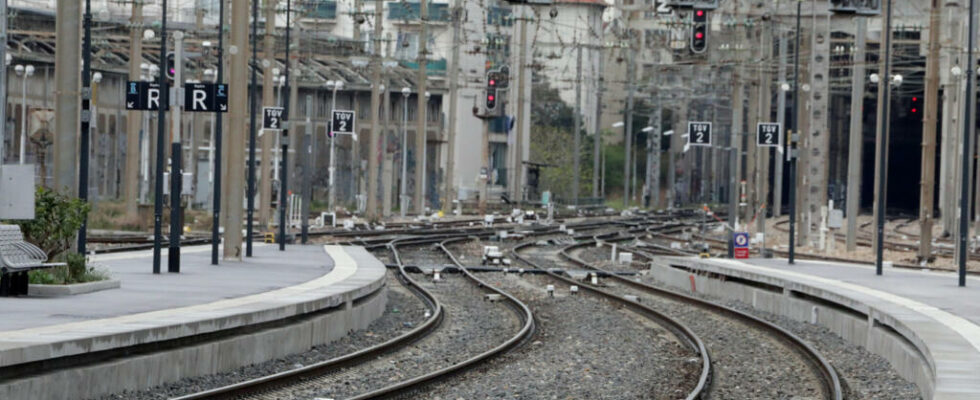At the end of January, SNCF Réseau and the steel company Saarstahl Rail, European leader in rail, signed a contract of 1.3 billion euros for the manufacture of “green” rails. An example of recycling and circular economy on an industrial scale which should allow SNCF to significantly lower its carbon footprint on its rail network. The 27,000 kilometers of tracks are aging and each year, the SNCF withs 150,000 tonnes of steel from its network to replace them with new rails, which are now “low-carbon”.
Audioguide in the ears, we start the visit – in a deafening din – of the Saarstahl Rail factory, in Moselle, in the east of France. We follow Amine Basraoui, production manager at Saarsthal Rail: ” This is the start of the factory. These stuns are received by train, at the rate of about six trains per day. We will load these stuns in our ovens that we will go see immediately. »»
Bloom is the raw material which is used for the manufacture of rail. “” Why is this bloom decarbon? The standard process by high furnace uses coal – coke – which makes you have a lot of CO2 production. The process by electrical development makes it possible to virtually recycle the re -use rail. They are overhauled to reproduce raw material, so the blooms that we will use here in Hayange. »»
Ecological and economic benefits
Thanks to the electric arc oven, the manufacture of these “green” rails generates 70% less greenhouse gas than with the traditional process by high stoves. And for Mathieu Chabanel, the CEO of SNCF Réseau, there is another advantage: ” This contract with recycled rail is a contract that is economically efficient. So we combine ecology and economy with rails that are provided at “Bas-Carbon ”, but in very competitive prices. »»
The Minister of Ecological Transition, Agnès Pannier-Runacher, present in the Saarerstahl Rail factory, applauds: ” We demonstrated that we were able, in France, to combine industry and ecology, even though we were told that the ecological transition was likely to put our industry down. It was the ecological transition that saved these two industrial sites. »»
The recycling of rails marks the end of the dependence on metals
For Mathieu Chabanel, it’s ” A great satisfaction for SNCF Réseau that these rails are produced in France ». “” It also simplifies our logistics channels, and so it’s very useful for us. And moreover, 97% of SNCF network purchases are made from companies located in our country “, Press the CEO of SNCF Réseau.
Finally, the recycling of rails allows France to get out of its dependence on metals: ” We are dependent on the supply of metal at 99.7%. Resources are becoming rarer. It will be a war to access the most essential resources, metal, energy, and it is up to us today to be able to build this sovereignty. And it obviously involves ecological transition “, Specifies Agnès Pannier-Runacher.
At the end of this six-year contract, the entire French rail network should be equipped with “low-carbon” rails.
Read tooFrance will provide Ukraine rails, bridges and seeds
